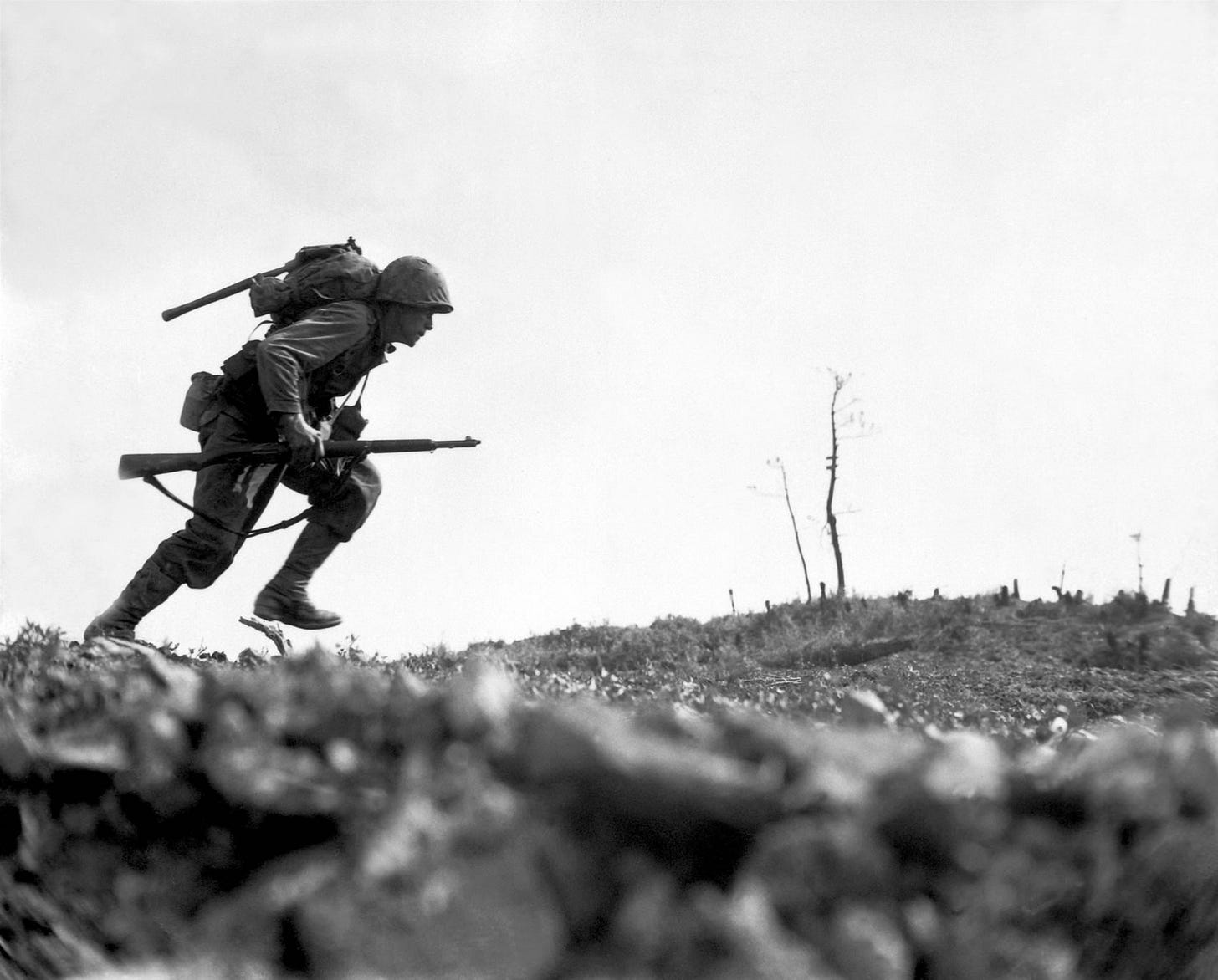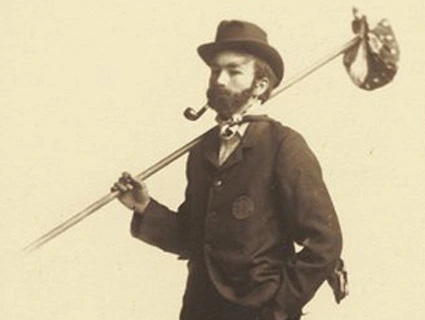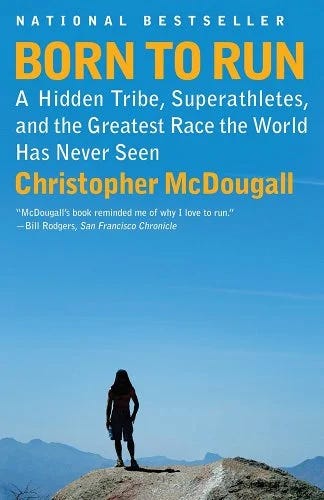Far, Fast, or Heavy
Or- Stop always doing what you always do.
Think.
Thanks to those who took the survey last week. It seems that a lot of you ruck occasionally, but don’t necessarily consider it a part of your normal workout routine. Hopefully, we can change that.
There were a few who were unfamiliar with rucking, so let’s start with John’s definition.
Rucking is moving under load.
We can put a finer point on it and say that the load should be in a rucksack, but let’s leave the aperture open for now.
From nomadic tribespeople to hitch-hiking hobos, our ancestors evolved to carry stuff. They walked a lot and moved with their possessions.
We used to be good at it.
I have read that our hunter-gatherer forbearers averaged around 18,000 steps per day (no idea how that number was arrived at).
Now we move less. A lot less. According to the Mayo Clinic, the average American walks between 3-4,000 steps per day. That is less than two miles.
In recent years, 10,000-steps day has been the goal of Fitbit wearers. That equals 4-5 miles which isn’t bad, but new research shows that activity trackers can be off by more than 25%, (Micheal Easter wrote about it here) and usually not in your favor, meaning they over count.
You may be thinking, man! I thought I was getting my steps in; I don’t have time to add another hour of walking.
You don’t have to; you can just add weight.
We can modulate the workout we receive by adjusting the levers of rucking:
This morning (Wed) I was bemoaning the fact that this post was still unwritten as I prepared for my morning ruck.
Then it hit me that I was getting ready to do the same ruck I do several times each week.
Distance: 5 miles
Speed: 15 min per mile
Load: 45 lbs.
Five miles is all I generally have time for in the mornings. At a 15-minute pace, I can be done in 1 hour and 15 minutes.
But, I realized that I had become comfortable with rucking at that pace and distance. I needed to mix it up.
I decided to crank down on the fast lever and keep my pace under 14 minutes per mile (goal 13:30-13:45) That simple change completely changed the workout.
I have short legs. In order to maintain that pace, I needed to increase my arm swing and maintain focus on moving fast.
Normally I am able to allow my mind to wander knowing that I can comfortably keep a 15-minute pace without checking my Garmin.
At a sub-14-minute pace, I had to remain laser-focused on stepping out. Any time my mind slipped I noticed myself slowing.
My heart rate stayed within Zone 2, and I finished nearly seven minutes faster than usual.
The moral of this story is that if you always do what you always do what you always do gets easy.
Easy is good for Sunday Morning, but easy doesn’t move the needle when you're building fitness or mental toughness.
I have previously likened mental toughness to a well that we dig with our effort.
An ordinary workout is like performing routine maintenance on the well, removing leaves and debris.
It keeps the well clean and useful, but it doesn’t dig the well deeper.
Maintenance is important, but just like we would dig to prepare for a drought that lowers the water table, we need to inoculate ourselves to discomfort to increase the ability to find comfort in it.
So, look for opportunities to adjust the levers of far, fast, and heavy to change up your ruck workout and focus on your weaknesses.
Likewise, if you want to increase distance, slow down or drop a few pounds from your ruck.
Or you can ramp up your workout by including speed or load intervals. After a warm-up, increase your pace to as fast as you can walk for a mile, or load up with extra weight that you shed as you go.
If you are preparing for any sort of special operations selection you will need to run with your ruck on, otherwise I don’t recommend it.
According to my Garmin, this morning’s 5 miles took 1 hour 8 min 32 sec. That equates to a 13:42 pace. It kicked my butt. Which is good. My butt needed kicking.
What’s your favorite ruck workout?
P.S. If you enjoy Think. Read. Write. Repeat. and would like to support and buy me a beer, click on the beer below and you can do just that. Cheers!
Read. Born to Run by Christopher McDougall
This book has been around for quite a while and essentially started the barefoot running movement and got a lot of people interested in endurance running. Most of the same adaptations that suited humans for running also aid in rucking. It’s your evolutionary birthright. Give it a read
Write. Lethal Minds Journal
I don’t want to sound like a broken record, but I’d be doing a disservice if I didn’t occasionally mention the Lethal Minds Journal. Please check it out and subscribe here on Substack.
We are now taking submissions for the next issue. There is also a forthcoming print edition featuring the best writing of our first year.
Please check it out, and if you are an active-duty service member or veteran interested in writing, it is a great way to get your foot in the door and work with some amazing editors.
Repeat.
Words of wisdom from those who said it best:
Only those who will risk going too far can possibly find out how far one can go.-T. S. Eliot
"If you want to go fast go alone. if you want to go far, go together." —African Proverb
“Life is like riding a bicycle. To keep your balance, you must keep moving." —Albert Einstein
"Perfection is not attainable, but if we chase perfection we can catch excellence." —Vince Lombardi
Thanks for reading Think. Read. Write. Repeat. See you next Thursday!













I too have joined the rucking again, partly from you and partly from F3. (f3nation.com) I find it less stressful on my body actually and can tell it has even improved my posture. A good walk, still, no headphones, just me, my breathing, my footsteps and my thoughts.
As an avid cyclist who is currently hanging out in the Alps, I'm working on reminding myself how much terrain plays into everything. I need not think in average miles-per-hour or total miles per ride out here. Rather, vertical feet. A twenty-mile ride back home? Pssh. 20 miles here might mean 4,000-feet of climbing. Context matters. Anyway, that's my current interpretation of "Far, fast, or heavy."
"Far, fast, or UP."